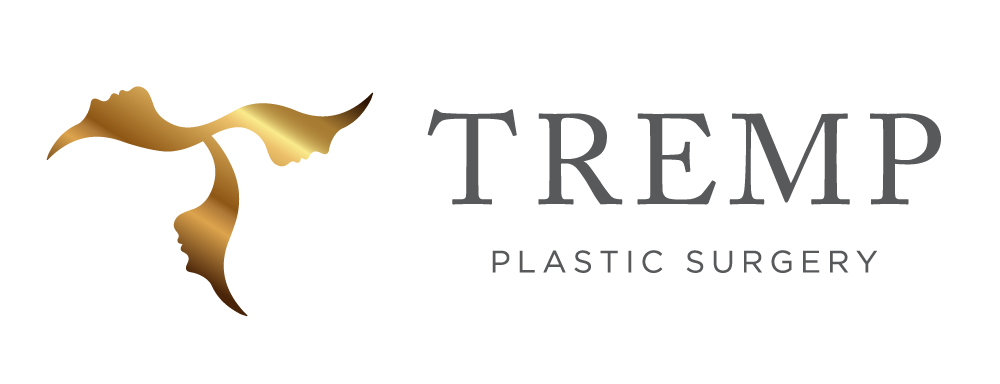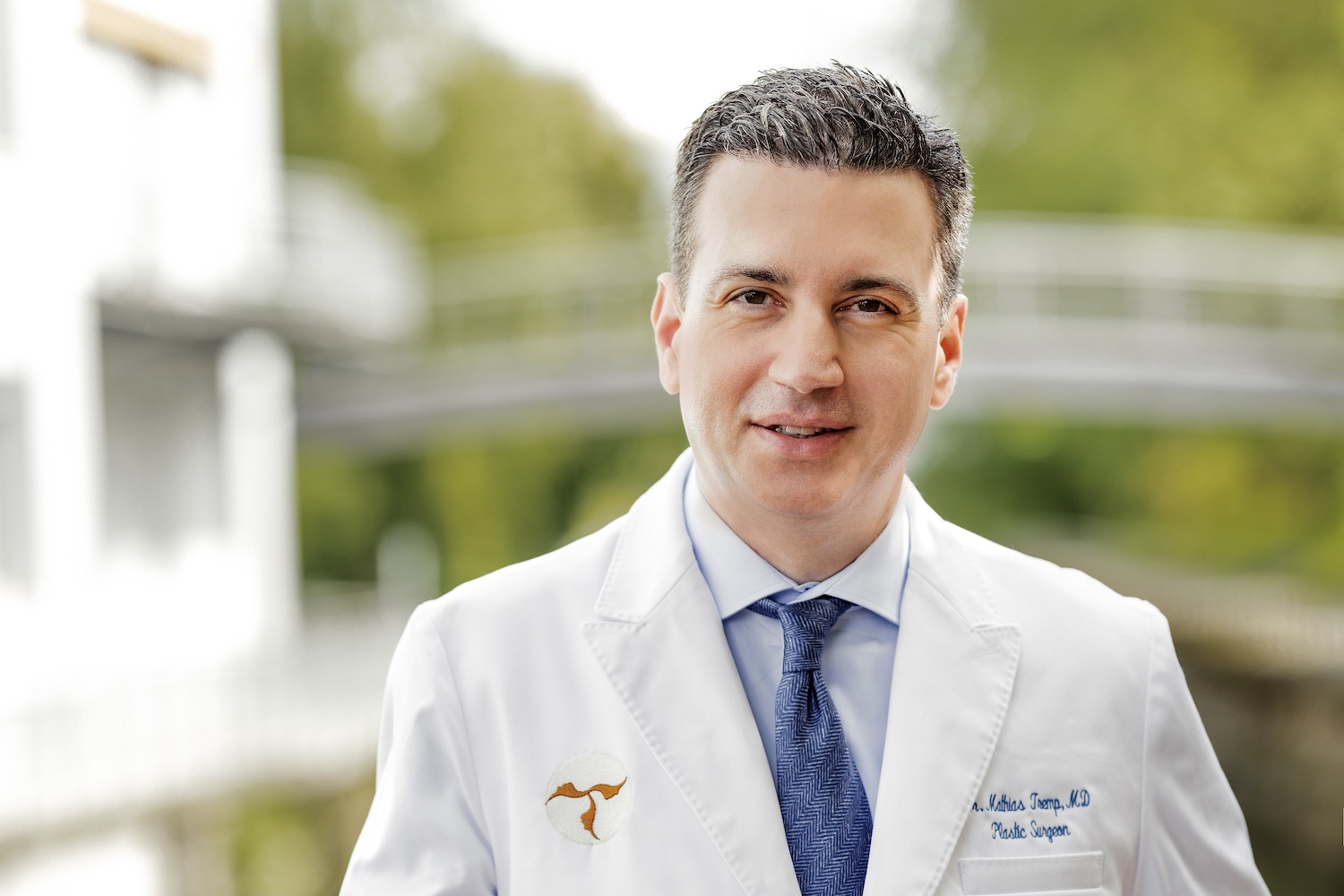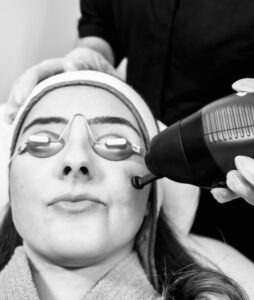Access and placement of the breast implant? Questions for PD Mathias Tremp, M.D.
Access and placement of the breast implant? Questions for PD Mathias Tremp, M.D.

To place the implant in the breast, the access route and the exact position of the chosen implant is discussed and precisely defined with PD Dr Tremp in advance. A small incision is made to create a small cavity into which he places the breast implant. Depending on the shape and size of the breast and the condition of the glandular and soft tissue, the breast implant can be placed either above or below the breast muscle.
Read also: Breast augmentation, breast lift, breast reduction, nipple correction
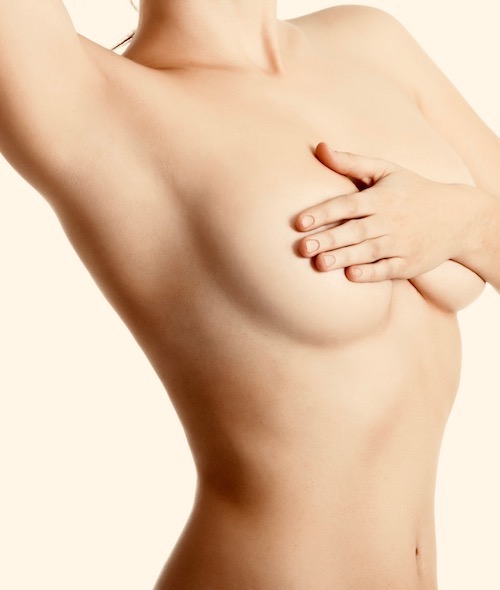
Which method is best for accessing the breast implant?
Which methods are most suitable varies from patient to patient: criteria include the shape and size of the breast and areola, as well as the desired size and material of the breast implant chosen.
The access for the breast implant can be either in the natural skin fold under the breast, in the armpit or around the nipple.
Access via the inframammary fold (underbust)
This approx. 3-4 cm long incision in the underbust fold is chosen most often. It allows particularly good access, the breast can be easily shaped and the ability to breastfeed is maintained. The length of the incision depends on the size and consistency of the breast implant. With a hybrid method (implant and fat grafting into the breast) the incision can be even smaller.


Access via the axilla (axillary)
This approximately 3 to 4 cm long incision in the armpit is suitable for so-called "scar-free" breast augmentation. The procedure is performed endoscopically, i.e. with the camera. This technique is very elegant, has a high patient satisfaction and can also be used with larger implants. Usually, with this approach, the implant is inserted under the muscle.
Access via the nipple (periareolar)
An incision in this area is used less frequently. This is very suitable if the areolas are to be adjusted, reduced or repositioned. The scar is not very visible due to the darker skin pigmentation. There is a slightly increased risk of infection due to the nearby mammary gland ducts and the associated possible restriction of the ability to breastfeed.

How and where is the breast implant placed?
The breast implant can be placed in the following three areas:

Between mammary gland and pectoral muscle (subglandular)
If the implant is positioned in this area, there is rapid healing with little pain. The procedure can theoretically also be done in twilight sleep and is often outpatient.

Under the pectoral muscle (submuscular)
Here the implant can be placed in a non-slip position, but the healing process takes a little longer. If the muscle is tense, the breasts can become deformed and the pain after the operation is somewhat more severe than with a subglandular implant position. The result is usually more natural and the rate of capsular fibrosis is lower than when the implant is placed over the muscle.
Partially behind the large pectoral muscle (subpectoral)
Here the upper part of the breast implant is behind the muscles and the lower part behind the mammary gland. This technique can be done with slightly sagging breasts and there are 3 possible degrees of preparation.
Aftercare for breast augmentation?
After a surgical breast augmentation, the breasts may be tense and painful for the first few days. However, these sensations usually subside by themselves. Overall, regular follow-up examinations are performed up to one year after the operation, then annually.
At least 5 years after breast augmentation, an MRI examination is recommended to evaluate the implants or possible capsular fibrosis. After that, an ultrasound examination every 2 years is sufficient if you have no complaints.
As a patient, you should observe the following rules of conduct after the operation in order to optimally support the healing process:
You should not work directly after the surgery. Depending on the activity, you can return to your job after 3 to 7 days. You can usually perform your everyday activities without restrictions after 7 days.
Depending on the type of sport, you should not do any physical activity for a week. However, to promote lymphatic drainage or decongestion and also as a thrombosis prophylaxis, you should exercise 5 - 6 times per day (light walking) directly after the operation. Sports that put too much strain on the chest and arm muscles should be avoided for approx. 4 weeks with round implants or 12 weeks with drop-shaped implants, depending on the choice of implant.
Patients should permanently wear a special bra for about 4 to 6 weeks, which provides the necessary stability. At the same time, you will receive a breast belt from us, which must be worn for 4 to 8 weeks, depending on the position of the implant. The compression garment can be removed for showering.
To check the results of the operation, weekly check-ups are carried out initially after a breast lift, followed by follow-up check-ups every 6 to 12 weeks.
How should I lie after breast surgery?
After breast augmentation, a sufficiently long sleep of at least 8 hours is necessary for further wound healing. During the first 4-6 weeks you must sleep on your back. The support bra or breast belt must be worn at all times. The compression garment reduces swelling and pain and stabilizes the implants. Ideally, when sleeping, the upper body should be elevated about 30° and the arms should be placed on pillows to reduce swelling and pain. You can place several pillows or ring pillows behind the neck and under the knees to relieve the back. If you normally sleep on your stomach, you can practice sleeping on your back before the breast surgery. There should be no pressure on the implants, otherwise the implants may shift. You can sleep on your side 3 weeks after the operation. It helps to put a pillow under your arms and to your side so that you do not turn unintentionally. If the wounds are completely healed, you can lie on your stomach again after 4-6 weeks for round implants or after 12 weeks for drop-shaped implants.
Breast augmentation in combination with a breast lift for sagging breasts
The breast is an important female feature. If they do not have the desired shape, this can have a negative impact on the self-confidence of the woman concerned. To correct a sagging breast with low breast volume, surgical breast augmentation and/or breast lift are suitable.
A breast lift (mastopexy) is performed to counteract sagging breasts. The breast lift is usually performed under general anaesthesia and takes about 2 to 3 hours in total. During this surgical procedure, up to three incisions are made to remove the excess skin tissue on the one hand and to move the nipple into a higher position on the other. Depending on the incision technique, a distinction is made between different methods that are also used for breast reduction.
Side effects of breast lift?
Although complications are rare with a breast lift, the patient must still be informed about possible risks: After the operation, bruising (haematoma), infections, post-operative bleeding and swelling may occur.
In addition, the patient may experience numbness in the nipple and surrounding skin tissue. However, all these side effects usually disappear by themselves after 6 to 12 months and are no cause for concern.
The surgical breast lift also leaves visible scars in the incision area. These fade more and more with time, but they remain for the rest of the patient's life. However, the scars are secondary for patients when the silhouette is good.
Do you have any questions about aesthetic breast surgery?
Contact us for a meeting.

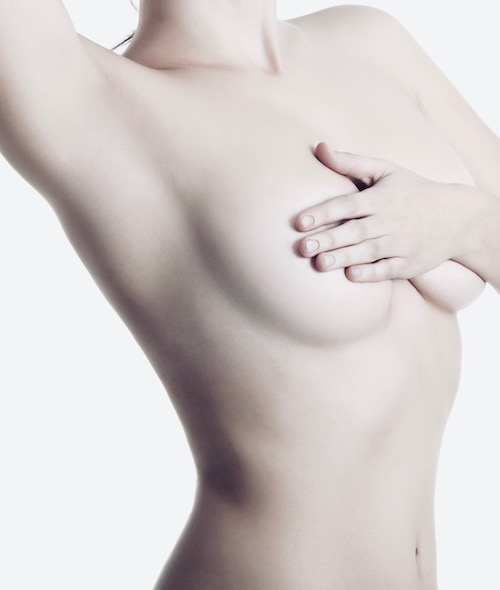
Do you have any questions?
Arrange a consultation with PD Dr. Mathias Tremp
Contact us during office hours to arrange a consultation.
Dr. Tremp is ready to answer your questions and explain the benefits and risks of the operation. Find out whether your desired operation is possible.
Book your preferred date online.
If your desired appointment is not available online, please contact us by telephone.
Our offer for aesthetic medicine and plastic surgery
Our range of treatments covers the entire spectrum of aesthetic medicine and plastic-reconstructive surgery. Each treatment is an individual procedure that is precisely tailored to your wishes, needs and prerequisites.
We stand for transparent and fair prices. The costs include all measures such as preliminary consultation, operation, anaesthesia, stays and follow-up checks. The costs for cosmetic surgery treatments are only covered by health insurance in exceptional cases. Contact us for your questions about the treatments.
Topics and answers by PD Dr Mathias Tremp
PRF? PRP? Vampire Lift? Plasma treatment? Questions for PD Dr. Mathias Tremp
Platelet-rich fibrin (PRF) is the further development of platelet-rich plasma (PRP). The use of PRF is becoming increasingly popular and is...
Weight loss injection? Semaglutide? Weight reduction? Questions for PD Dr. Mathias Tremp
Obesity can be a difficult condition to overcome. Associated with it are health-related conditions such as high blood sugar levels, high blood pressure, type 2 diabetes and...
Polynucleotides? Anti-aging? Firm and radiant skin? Biostimulation? Questions for PD Dr. Mathias Tremp
Polynucleotides are an emerging trend in anti-ageing injections and offer an attractive alternative for skin rejuvenation and improvement of skin quality. Through...
CO2 laser? Skin rejuvenation? Acne treatment? Pigment treatment? Questions for PD Dr. Mathias Tremp
Wrinkles around the eyes or mouth often appear at a young age - with the CO₂ fractional laser, we can bring your wrinkles...
